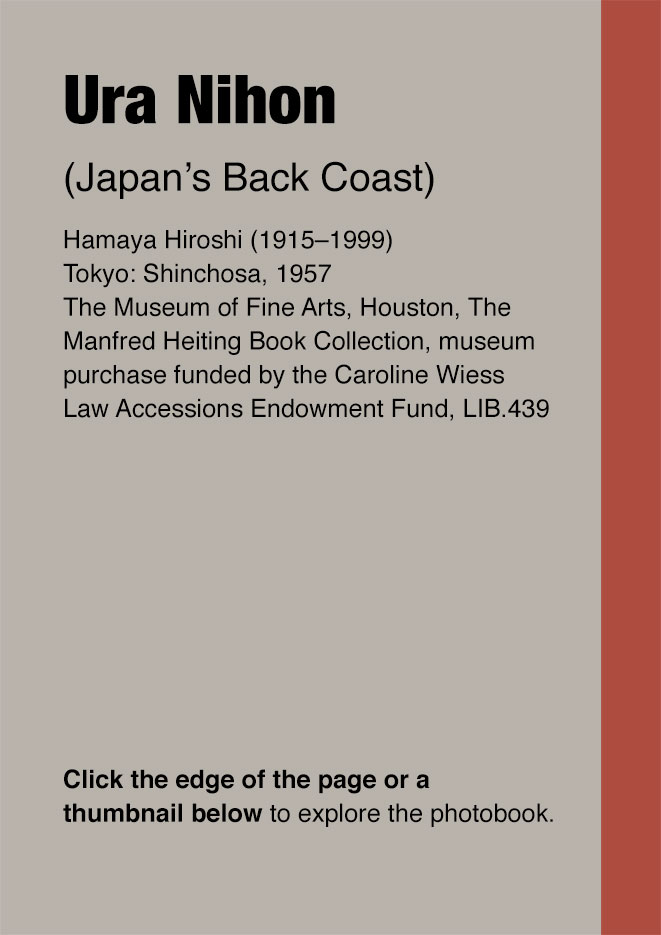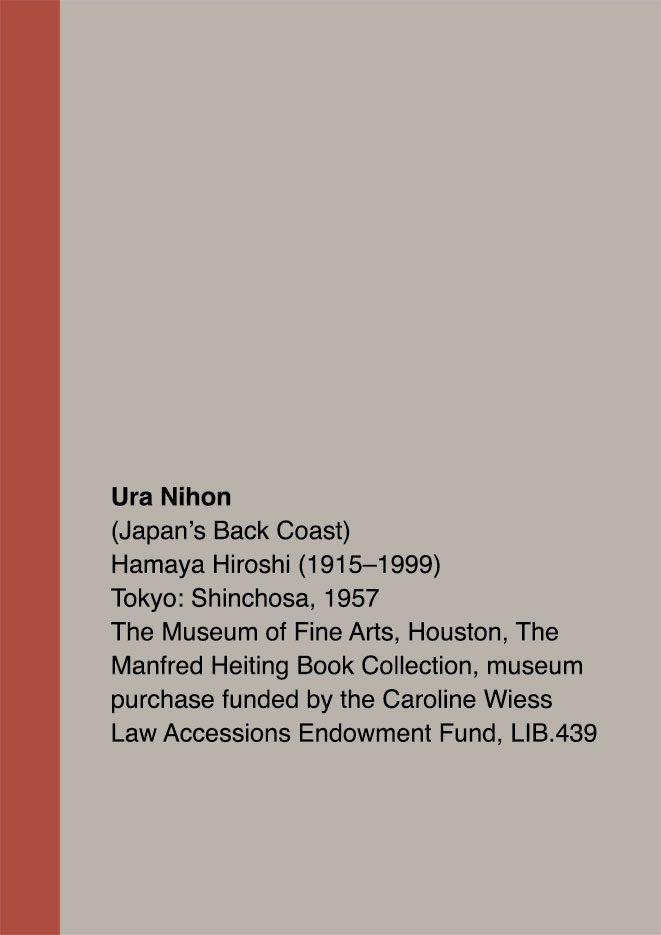















































Hamaya Hiroshi dedicated much of his practice to examining the relationship between people and the natural environment. A landmark in documentary photography, this 1957 photobook is a record of daily life and folk customs from Aomori in the north to Yamaguchi in the south. The descriptions of his subject matter, along with annotated maps, demonstrate Hamaya’s expository approach to presenting a side of Japan far removed from its modernizing urban centers. As he explained in the introduction:
The back coast of Japan is a land the sun does not favor. . . . The concept, [sic] “back coast of Japan” is used in contrast with that part of Japan facing the Pacific Ocean . . . knowledge of this back coast is somewhat vague and unclear to those not living there, and in the minds of most people this part of Japan is a country obscured by snow.
As Japan enters the second half of the twentieth century, she is recovering like a powerful phoenix rising from the ashes of her defeat.
Japan’s material progress is truly astounding. The champion of Japan is Tokyo, with her luxury, vanity, chaos and constructive energy all thrown in together.
A traveller, [sic] leaving this Tokyo behind in a night train and heading towards the back coast of Japan finds, when daylight dawns, that this wonder of the twentieth century is transformed into the wonder of the eighteenth century. He will be able to witness primitive methods of productive labor. Here, geographical distance becomes distance in time . . . This too is Japan.
Ura Nihon (Japan’s Back Coast)
Hamaya Hiroshi (1915–1999)
Tokyo: Shinchosa, 1957
The Museum of Fine Arts, Houston, The Manfred Heiting Book Collection, museum purchase funded by the Caroline Wiess Law Accessions Endowment Fund, LIB.439